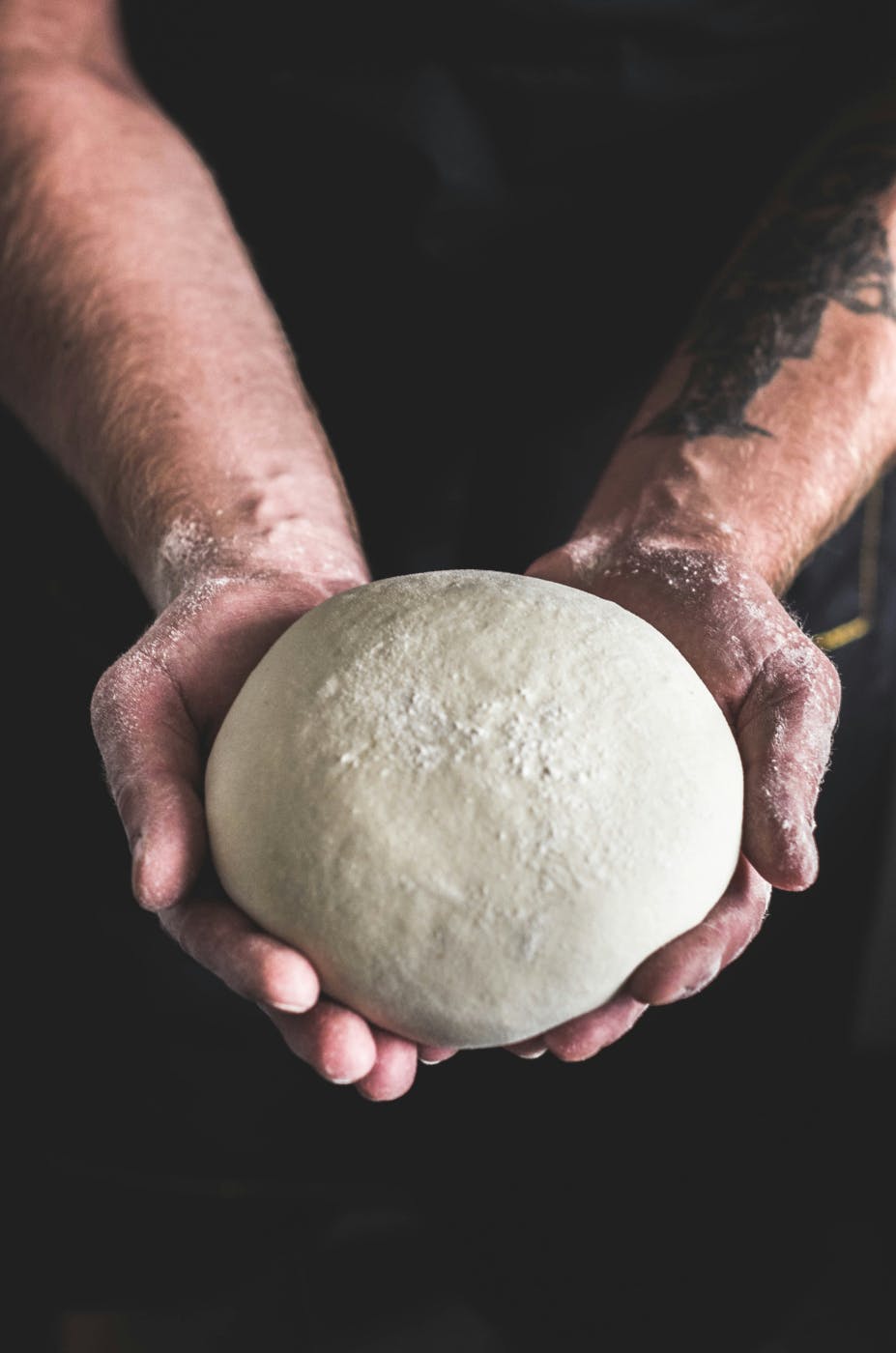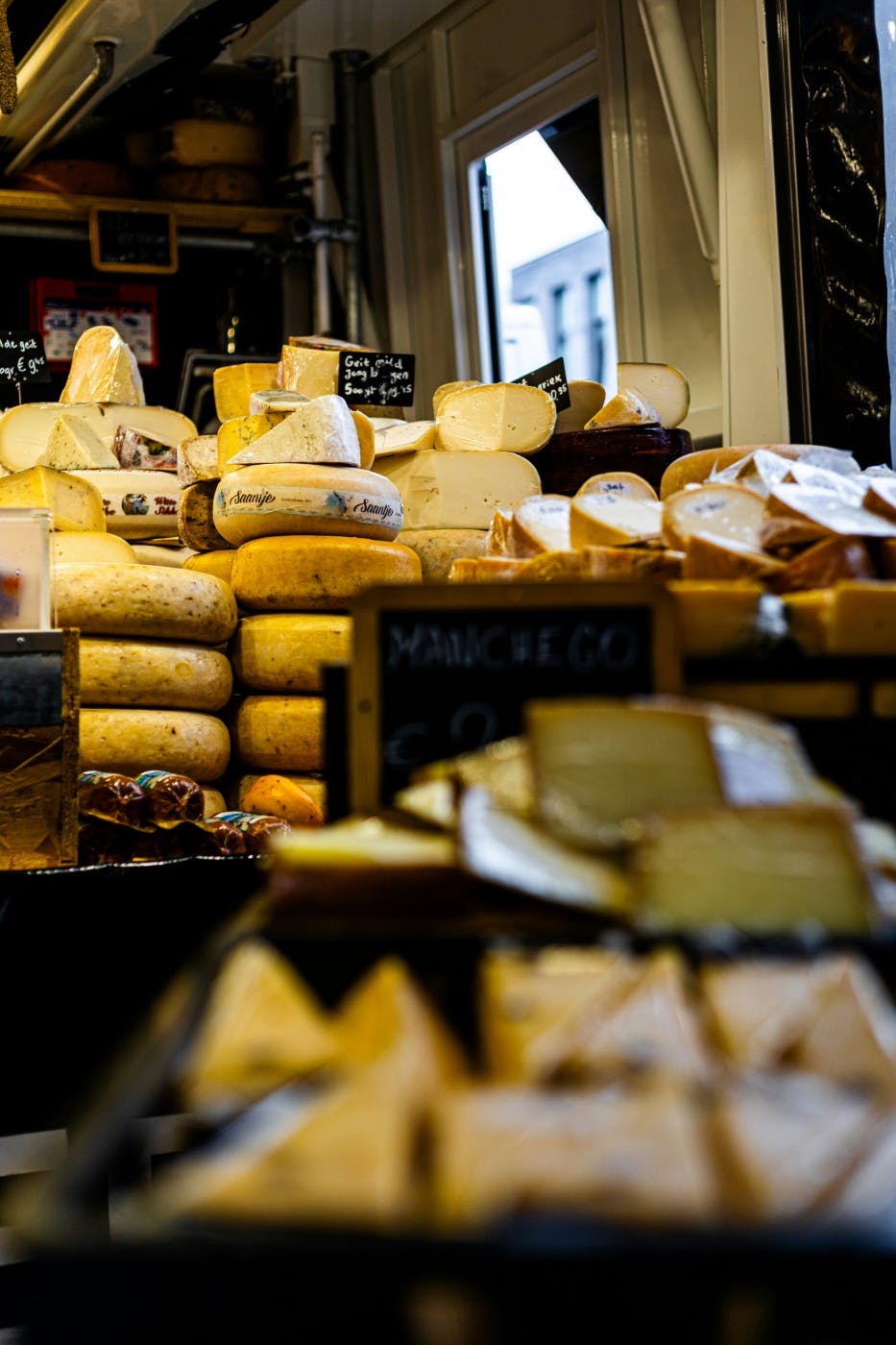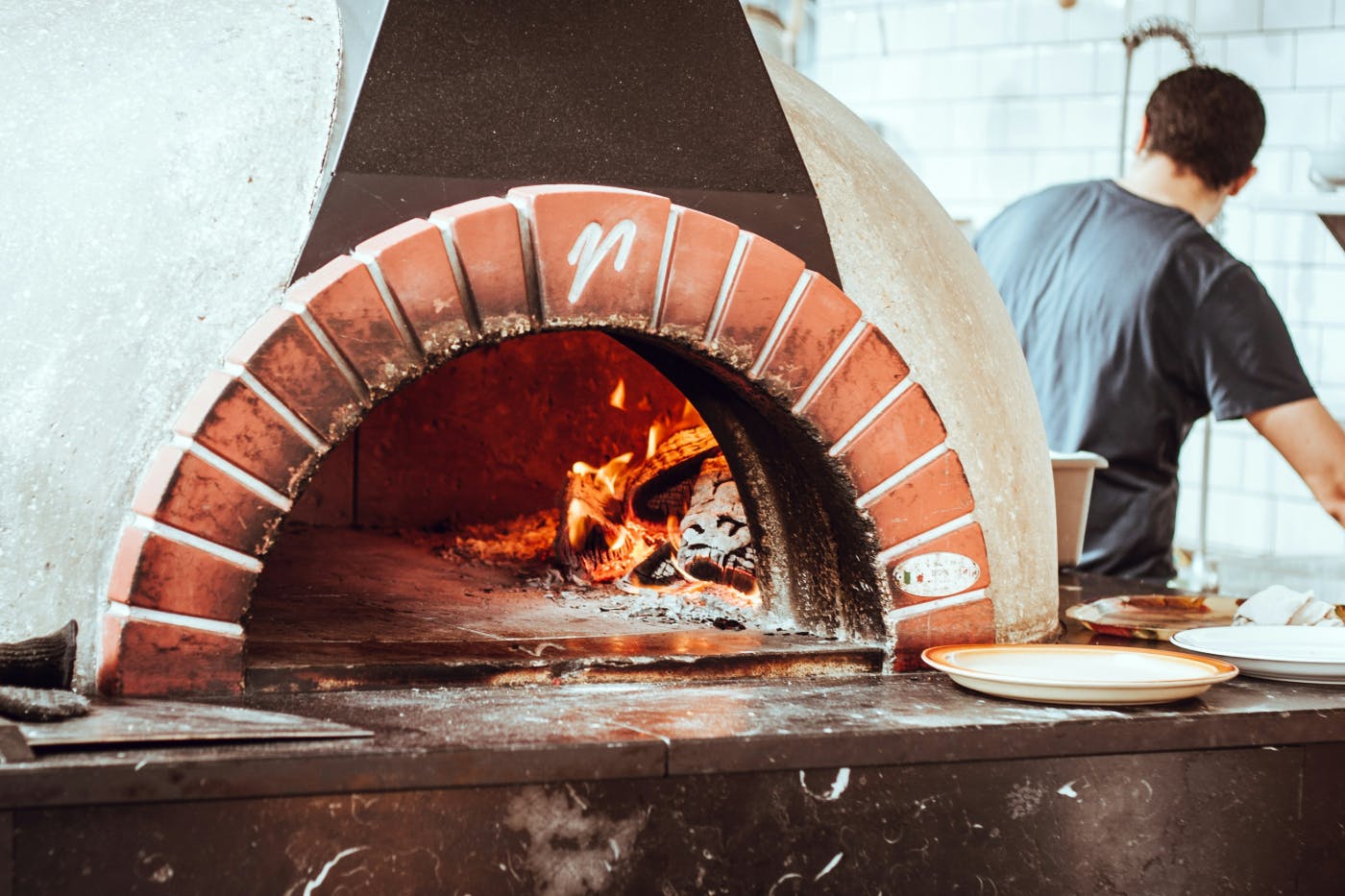
Like pizza, a website is made up of essential ingredients. Too little sauce and it's dry and lifeless; too much cheese, and it's overwhelming. Each component needs to work together harmoniously to create an experience that's irresistible.
Pixel Perfect: Why Great Web Design is a Lot Like Great Pizza
I am not a healthy eater, believe me. At my age, I should eat sensible meals with vegetables and grains, you know, all the stuff that they tell you to eat in magazines to help you live longer and longer. I’ve read the articles, sometimes even when I’m eating a burrito at two in the morning. Doesn’t matter, I am still the poster boy for unhealthy eating.
One of my weaknesses is pizza. Lord above, how I love me some pizza. Hot, cold, thin crust, plain cheese, covered with meats—I don’t care. Pizza will be eaten any time, day or night, weekday or holiday; if someone says pizza, I say yes, please.
Everyone loves pizza. It's one of life's universal truths, right alongside "don't read the comments" and "never trust Wi-Fi at coffee shops." From thin-crust Neapolitan masterpieces to deep-dish Chicago pies, pizza comes in countless varieties—each beloved for its unique charm. It's comfort food, party food, and the perfect excuse for late-night indulgences. Ever wonder why college students survive on cold pizza for breakfast? Because it's delicious, dependable, and somehow always hits the spot.
But here's something you might not have realized: creating great web design has more in common with making the perfect pizza than you might think.
Like pizza, a website is made up of essential ingredients. Too little sauce and it's dry and lifeless; too much cheese, and it's overwhelming. Each component needs to work together harmoniously to create an experience that's irresistible. So, put on your metaphorical chef’s hat because we're about to slice into what makes both pizzas and websites utterly delectable.

1. The Dough (Your Site Structure)
I lived in Italy for a few years, and I will now say something that may seem obvious, but it’s really not—the pizza was amazing. "Well," you'll say, "it's Italy, of course it is." But let your mind wander. Think about the best pizza you’ve ever had, and then imagine that same pizza only ten times better, with a crust that's different in every trattoria you visit. The dough, the cheese, the toppings—each unique, even if the joints are side by side. Your pizza is going to be a singular experience. That’s the beauty of pizza in Italy.
This pizza beauty can be mirrored in website beauty. How, you ask? Hang onto the cheese grater—we’re going to show you now.
Just like pizza dough forms the base, your site's structure forms the foundation of the user experience. Great pizza starts with great dough—it should be firm enough to hold all the delicious toppings yet soft enough to bite into without wrestling the slice away from your mouth. Likewise, your site's structure must be robust enough to support all your content yet intuitive enough for visitors to find exactly what they're looking for quickly and effortlessly.
Think about the last time you grabbed a slice, and the crust collapsed, spilling toppings all over your shirt. Frustrating, right? Similarly, if users can't navigate your website easily or encounter unexpected dead ends (404 errors, anyone?), they'll click away and find a competitor whose website doesn't leave them feeling lost and covered in digital sauce.
Good dough—and good site structure—takes planning and craftsmanship. A strong information architecture, clearly organized menus, intuitive navigation paths, and logical flow between pages ensure that your visitors never feel like they're wandering aimlessly through an endless maze of links.
Just as there’s thin-crust, thick-crust, stuffed-crust, and gluten-free crust, websites have structures tailored to specific purposes. E-commerce websites might emphasize easy product navigation and quick checkout, while informational websites prioritize clear content categorization. Choosing the right structure for your audience and goals is crucial, much like selecting the perfect crust for your pizza-loving palate.
2. The Sauce (Your Content)
If you are a fan of The Godfather and later The Sopranos, you’ve learned that the pasta sauce we wanna-be Italians make is called gravy. So, you can make Sunday gravy or red gravy, and this would be a style of sauce that has chunks of meat in it—meatballs, sausage, beef—whatever is handy is thrown in, and that makes a Sunday gravy. This gravy then goes over pasta and occasionally over the eyes of the guy who got whacked during the antipasti course.
But Sunday gravy doesn’t go on pizza; that’s sauce. In Italian, the sauce is called sugo. The great meaty Sunday gravy is called ragu. Pizza sauce is sauce, not gravy. Make sure you know that.
Sauce gives pizza its zest—it's vibrant, flavorful, and absolutely essential. It can elevate a pizza from average to unforgettable. On your website, your content plays the same role. Just like sauce, your content should be fresh, relevant, and engaging enough to keep visitors savoring every bit of information.
Imagine biting into a slice that looked promising but tasted bland and forgettable. Disappointing, isn't it? Similarly, if your content lacks originality or value, visitors will leave faster than you can say, "Hold the anchovies." Regularly updating your site with engaging blog posts, interesting articles, or informative product descriptions ensures visitors come back for seconds (and thirds).
Great pizza sauce isn't just tasty—it's carefully seasoned, balanced, and sometimes simmered for hours. In the same way, excellent web content requires careful planning and preparation. Sprinkle in storytelling, add a dash of humor, toss in useful insights, and always check to see if it leaves visitors hungry for more.
Fresh sauce is crucial. Stale or reheated sauce is a culinary crime. Likewise, outdated content can make your website feel irrelevant or neglected. Regularly update your site with timely, engaging content to ensure your visitors never lose their appetite.
Ultimately, great sauce—and great content—should enhance the experience, complementing your site structure and visuals, not overwhelming them. Each element must blend seamlessly to create a truly delightful user experience.

3. The Cheese (Visual Design)
Cheese, glorious cheese, oh, how I love it. I can eat cheese pizza until the cows come home. And the thing about cows is, if you don’t go get ‘em, they don’t come home. So I could eat a lot of cheese pizza. And, frankly, I do. Sigh.
Here’s the thing: cheese is a strange subject. Most people are traditional mozzarella-on-the-pizza folks, and that’s great. Mozzarella melts perfectly, tastes creamy without being overwhelming, and creates that visually appealing golden-brown finish we crave. Now and then someone, I’m lookin’ at you, St. Louis, decides they’ll be different and put—dear God—Provel cheese on their pizza. This processed cheese blend of cheddar, Swiss, and provolone doesn't belong on a delightful crust covered with meats and veggies. Provel cheese is too jarring for good pizza. Maybe it works as a regional pie—again, looking right at you, St. Louis—but as a universal cheese, nope, gotta pass.
So, what does this mean for your website cheese choice? Cheese is often the first thing that catches your eye on pizza. It's melted, gooey, and impossible to resist—it's the visual attraction that draws you in. On your website, visual design is your cheese. Good visual design sets the tone, evokes the right emotions, and complements your message perfectly. Like mozzarella, your visuals should be appealing and smooth. Avoid the flashy, cluttered "processed cheese" designs that overwhelm visitors and detract from the user experience. Balance, clarity, and simplicity—just like mozzarella on pizza—will keep your audience craving more.
4. Toppings (Interactive Elements)
Toppings are where pizza creativity shines. Pepperoni, mushrooms, olives—whatever you prefer, toppings personalize the pizza experience. Likewise, interactive elements on your website (videos, animations, forms, chatbots) add a unique flavor and depth. Just as pineapple on pizza might delight some and horrify others (a debate as divisive as politics), not every interactive element suits every audience.
If you've ever seen a pizza overloaded with every topping imaginable, you know it's messy, confusing, and overwhelming. Similarly, cramming your website with endless animations, pop-ups, and videos can confuse your visitors. Instead, pick interactive elements that enhance user experience, offering value without overpowering your core message.
Think carefully about what your visitors really need. Do they want quick answers? Add a simple chatbot. Do they need visual guidance? A short video might be perfect. Interactive forms that streamline the process or engaging quizzes that personalize content can make your site memorable and enjoyable. Like the perfect combination of toppings that makes your pizza delicious without overwhelming your taste buds, the right mix of interactive elements can make your website engaging and helpful without becoming cluttered or distracting.
Be thoughtful, experiment cautiously, and always keep your audience's preferences in mind. Because when it comes to pizza—and websites—it's all about creating a personalized, satisfying experience.

5. Bake to Perfection (Performance and Speed)
Ever bite into a pizza that's undercooked—soft dough, cold toppings—or worse, burnt into oblivion? Not pleasant. Websites suffer the same fate if performance isn't optimized. Slow load times, laggy interactions, or broken links can ruin the entire experience. Your visitors, much like hungry diners, are impatient; they'll quickly abandon a sluggish site.
Optimizing your site's speed and performance is akin to baking pizza to golden perfection. Test your site regularly, optimize images, streamline code, and ensure quick load times. Just as the perfectly cooked pizza arrives hot and fresh at your table, a well-optimized website delivers content quickly, smoothly, and flawlessly.
Performance optimization isn't just about speed; it's also about reliability. Broken links, error messages, or pages that fail to load correctly are like discovering unexpected anchovies hidden beneath your favorite toppings—surprising, unpleasant, and enough to make visitors leave and never return. Regular maintenance checks, testing across multiple devices, and continuous improvements ensure your website remains dependable, enjoyable, and frustration-free. Just as a skilled pizza chef checks each pizza meticulously before sending it to the table, webmasters must continuously refine and perfect their site's performance to deliver a consistently delightful user experience.
Summing Up
Crafting the perfect pizza and creating an exceptional website both require thoughtful attention to detail, balance, and careful planning. From selecting a strong, user-friendly site structure (the dough), filling it with engaging, fresh content (sauce), appealing visuals (cheese), carefully curated interactive elements (toppings), and ensuring optimal performance (perfect baking), each component is vital.
At ThoughtLab, we understand the intricate art of combining these ingredients. Our expertise in creating pixel-perfect websites, balanced with engaging content and optimal performance, ensures your visitors enjoy a satisfying, seamless experience. Like your favorite local pizzeria that always leaves you craving another slice, ThoughtLab creates websites that keep your visitors coming back again and again. Plus we eat a lot of pizza. I’m just sayin’.
So next time you're savoring a slice, remember—great websites, just like great pizza, require the perfect balance of all the right ingredients.

